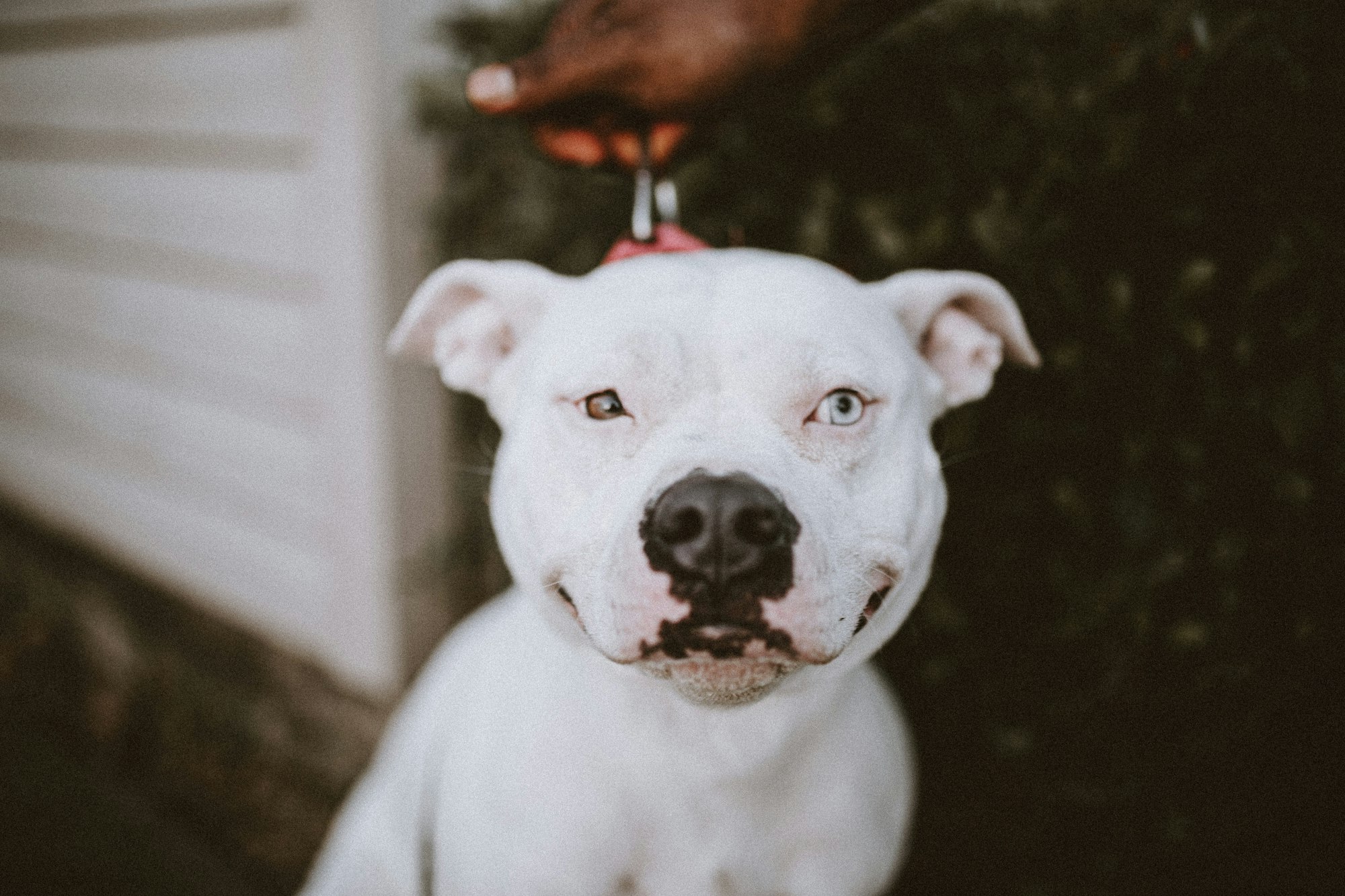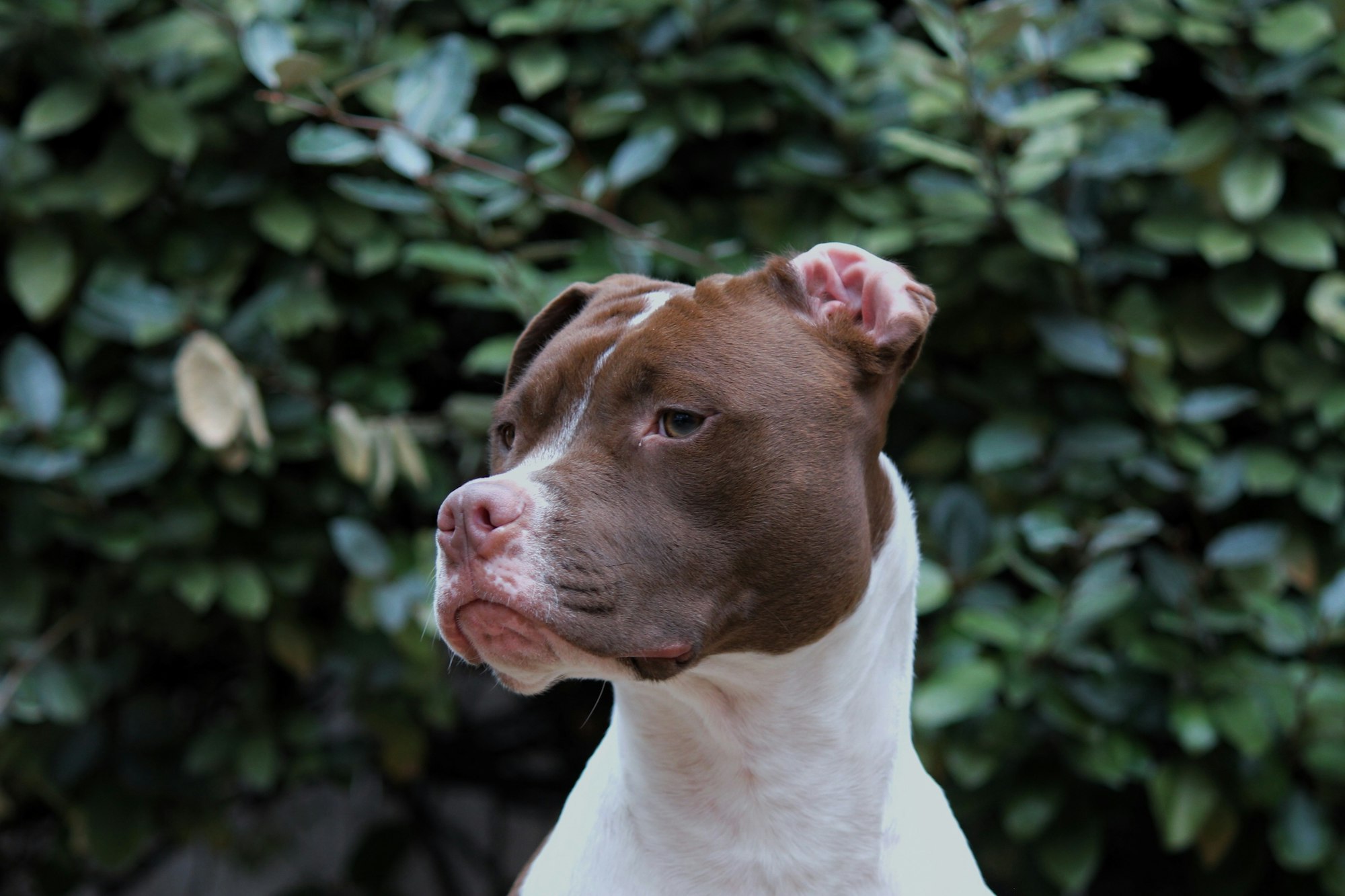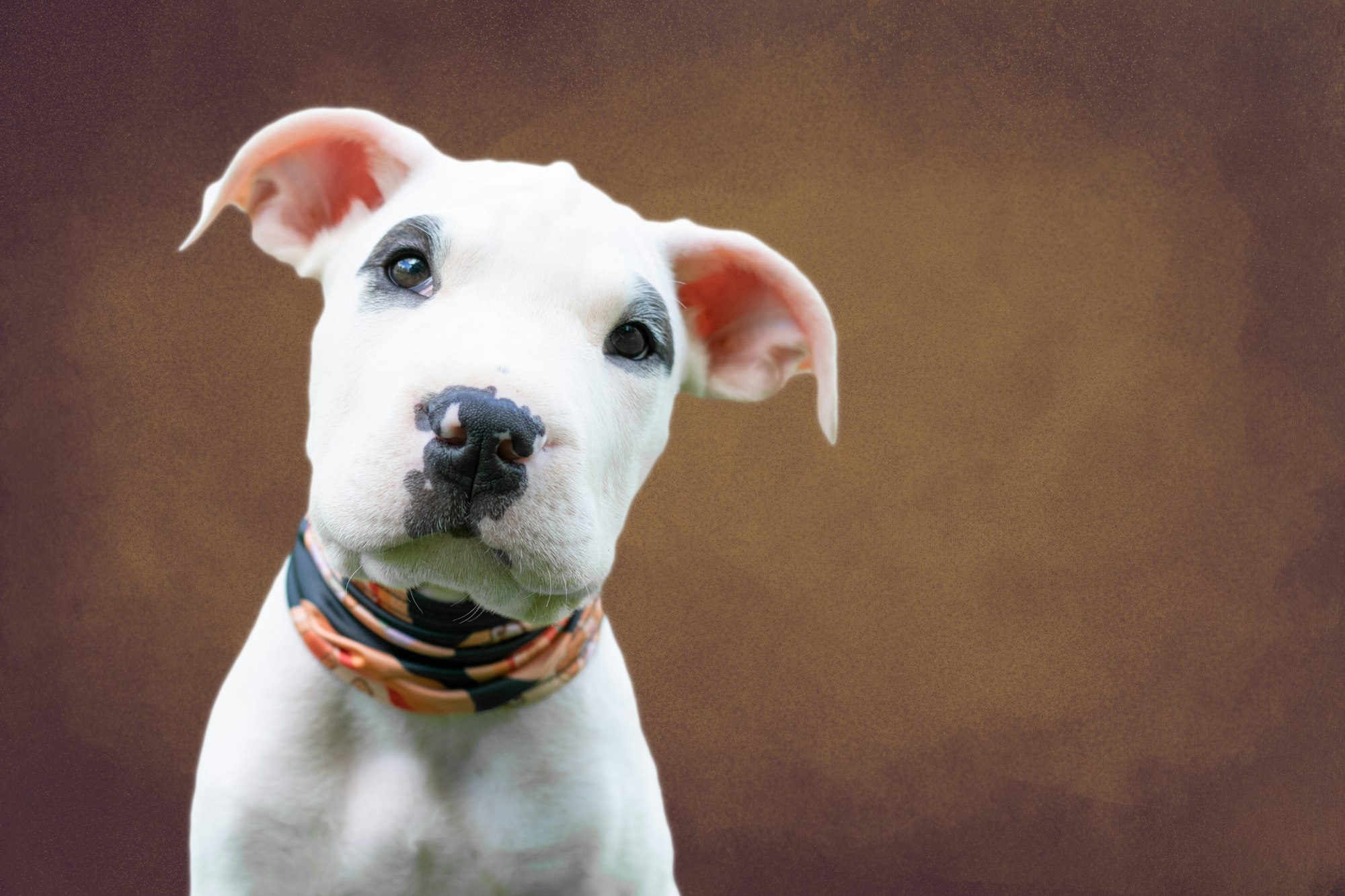Embarking on the captivating tale of the White Pitbull, we delve deep into the annals of history to unravel the origins, unique traits, and challenges faced by this distinct canine breed. As one of the most visually striking members of the Pitbull family, the White Pitbull has consistently evoked a mixture of awe, curiosity, and controversy throughout the ages. This journey invites us to explore the rich tapestry of events and influences that have shaped the White Pitbull's story while shedding light on its true nature and undeniable charm.
From its beginnings as a working dog bred for strength and tenacity to its evolution into a cherished companion and loving family member, the White Pitbull's journey is a testament to the resilience and adaptability of these extraordinary animals. As we embark on this fascinating adventure, we will examine the unique physical and behavioral traits that set White Pitbulls apart, as well as the challenges they face in a world where misconceptions and breed-specific legislation still persist.
Join us as we delve into the captivating world of the White Pitbull, celebrating its legacy, and advocating for a future filled with understanding, acceptance, and love.
A Brief History of White Pitbulls
Delving into the rich tapestry of the White Pitbull's past, a captivating story of metamorphosis and tenacity comes to light. Originating in the United Kingdom, breeders aimed to fuse the strength of Bulldogs with the swift, spirited nature of Terriers. The outcome was an exceptional canine athlete, initially bred for the inhumane sport of dog fighting. Amidst this backdrop, White Pitbulls stood out, not just for their distinct appearance, but as rare treasures in a challenging arena.
However, as society evolved and dog fighting was rightly banned, the role of the Pitbull underwent a transformation. It became evident that their remarkable strength and bravery had other more noble applications. Instead of being cornered in the grim world of combat, they began to find purpose as guardians, laborers, and devoted partners.

To boost their energy and maintain their gleaming white coats, some owners even began the practice of adding a cracked raw egg over dog food, affirming the breed's valued place in households. White Pitbulls, much like their vibrant counterparts, were celebrated for their determination, intellect, and steadfast loyalty, earning them spots in fields like law enforcement, search and rescue, and even therapeutic care.
Yet, transitioning from feared combatant to adored pet was fraught with challenges. The lingering prejudice against the breed was hard to shake. But the saga of the White Pitbull stands as an emblematic narrative of a breed’s power to surmount difficulties and reshape its identity in a world that was learning to embrace them anew.
Today, the White Pitbull continues its legacy, enchanting many with its steadfast spirit and unwavering devotion. By delving deeper into their narrative, we honor the White Pitbull's illustrious past and anticipate a future brimming with empathy, respect, and admiration for these outstanding dogs.
The Alluring Characteristics of White Pitbulls
Undoubtedly, the most captivating feature of the White Pitbull is its pristine, snow-white coat, a result of a recessive gene that inhibits pigmentation in the fur. While this breathtakingly beautiful coat is a feast for the eyes, it is not without its associated health challenges, such as increased susceptibility to deafness and skin sensitivities.
White Pitbulls are renowned for their remarkable intelligence, unwavering loyalty, and vivacious playfulness, making them exceptional family pets with the capacity to forge deep connections with their owners. However, as with all dogs, it is crucial to invest in proper training and socialization to ensure that White Pitbulls mature into well-mannered and well-rounded adult canines.
Their potential to be loving, protective, and joyful companions is immense, and with the right care and guidance, White Pitbulls can truly shine as cherished members of any family.
Teaching Your White Pitbull to Roll Over
Training a White Pitbull, or any dog for that matter, can be a rewarding experience. One of the most popular tricks to teach is "how to roll over."
Step 1: Start with the Basics
Before teaching your White Pitbull to roll over, make sure they've mastered basic commands like "sit" and "down." These foundational skills will make the rolling over process much smoother.
Step 2: Use Treats as Motivation
Grab your dog's favorite treats and get their attention by holding one near their nose. Lure them into a lying down position by moving the treat toward their shoulder. As they follow the treat with their head, their body will naturally start to roll over.
Step 3: Add a Verbal Cue
Once your dog is successfully rolling over with the help of treats, start adding a verbal cue, such as "roll over." Repeat this process several times, rewarding them with a treat each time they complete the action.
Step 4: Fade Out the Treats
Gradually reduce the reliance on treats by rewarding your dog only intermittently. Over time, they'll associate the verbal command with the action and perform it without the need for a treat.

The Challenges of Owning a White Pitbull
While White Pitbulls make excellent companions, they do come with some challenges that prospective owners should be aware of.
Deafness
As mentioned earlier, White Pitbulls are more prone to deafness due to the lack of pigmentation in their fur. It's crucial to have your dog tested for hearing loss and learn how to communicate with them effectively if they're deaf.
Breed Stigma
Pitbulls, in general, face a negative stigma, with many people believing them to be aggressive or dangerous. As a White Pitbull owner, it's important to educate yourself and others about the breed's true nature and work on changing the public's perception. On the opposite side of that, Pit bulls have also been called Nanny Dogs previously because of their gentle nature.
Breed-Specific Legislation
Some areas have breed-specific legislation that restricts or bans the ownership of Pitbulls. Before bringing a White Pitbull into your home, research the laws in your area and be prepared to advocate for your dog if necessary.
Coat Maintenance and Skin Sensitivities
White Pitbulls may have more sensitive skin, making them prone to allergies and sunburn. It's essential to monitor their skin health, provide appropriate grooming, and protect them from excessive sun exposure. They have a short coat that should not take a lot to groom them as they do not shed as much as other dogs.

The Importance of Socialization for White Pitbulls
Socialization is a critical aspect of raising a well-adjusted and friendly White Pitbull. Expose your puppy to various people, animals, and environments to build their confidence and reduce the likelihood of fear-based aggression.
Puppy Socialization Classes
Enrolling your White Pitbull in a puppy socialization class is a great way to introduce them to other dogs and people in a controlled environment. These classes provide a safe space for your dog to learn how to interact and play with others.
Positive Reinforcement
When socializing your White Pitbull, use positive reinforcement to reward good behavior. Treats, praise, and play are all excellent ways to reinforce positive interactions with new experiences, helping to create a well-rounded and confident adult dog.
Nutrition and Exercise for White Pitbulls
Like all dogs, White Pitbulls require a balanced diet and regular exercise to maintain their health and happiness.
Diet
Choose a high-quality dog food that meets your White Pitbull's nutritional needs. Consult your veterinarian to determine the appropriate amount and type of food based on your dog's age, size, and activity level.
Monitor your dog's weight and adjust their diet as needed to prevent obesity-related health issues.
Exercise
White Pitbulls are energetic and athletic dogs that require regular physical activity. Plan daily walks, runs, or play sessions to keep your dog physically fit and mentally stimulated.
Pitbulls are also great at dog sports like agility, flyball, and weight pulling, which can be a fun way to bond with your dog and keep them engaged.
Responsible Breeding Practices and Adopting White Pitbulls
Whether you're looking to adopt or purchase a White Pitbull, it's essential to support responsible breeding practices or rescue organizations.
Adoption
Many White Pitbulls end up in shelters or rescues due to overpopulation or misconceptions about the breed. Consider adopting a White Pitbull from a rescue organization or shelter, where you can give a deserving dog a loving home.
Reputable Breeders
If you decide to purchase a White Pitbull from a breeder, do thorough research to find a reputable breeder who prioritizes the health and temperament of their dogs. Avoid puppy mills and backyard breeders, as they often produce unhealthy and poorly socialized dogs.

Common Health Issues in White Pitbulls
White Pitbulls, like all dogs, can experience various health issues throughout their lives. Being aware of these common concerns can help you take preventive measures and address problems early on.
Hip Dysplasia
Hip dysplasia is a genetic condition where the hip joint doesn't develop properly, leading to arthritis and pain. Regular check-ups with your veterinarian and maintaining a healthy weight can help manage this condition.
Heart Disease
White Pitbulls can be prone to certain heart conditions, such as aortic stenosis and dilated cardiomyopathy. Early detection and treatment can help manage these conditions and improve your dog's quality of life.
White Pitbulls as Therapy and Service Dogs
Despite the negative stigma surrounding the breed, White Pitbulls have proven to be exceptional therapy and service dogs. Their intelligence, loyalty, and love for people make them well-suited for these roles.
Therapy Dogs
White Pitbulls can make excellent therapy dogs, providing emotional support and comfort to those in need.
They can work in hospitals, schools, nursing homes, and other settings where their calming presence and affection can make a positive impact.
Service Dogs
With proper training, White Pitbulls can also excel as service dogs, assisting individuals with disabilities in various ways.
Their strength and intelligence make them capable of performing tasks such as opening doors, retrieving items, and providing physical support for individuals with mobility impairments.
White Pitbulls in Pop Culture and Media
White Pitbulls, like their colorful counterparts, have made their mark in pop culture and media.
Their unique appearance and engaging personalities have caught the attention of the public, with some notable examples including:
Petey from The Little Rascals
Petey, the canine companion of the Little Rascals gang, was a Pitbull with a white coat and a distinctive black circle around one eye.
He became an iconic symbol of American pop culture and helped to shape a positive image of Pitbulls during the early 20th century.
Kano from the TV show Person of Interest
Kano, a White Pitbull featured in the crime drama series Person of Interest, played a military-trained service dog named Bear.
Kano's portrayal of Bear highlighted the breed's intelligence and loyalty, showing that Pitbulls can be loving and reliable companions.
Myths and Misconceptions
Throughout history, societies have been fraught with myths and misconceptions that often cloud judgment and perpetuate ignorance. When it comes to the canine world, few breeds have been as misunderstood and maligned as the Pitbull, especially the striking White Pitbull. These misconceptions, often rooted in half-truths and sensationalized stories, have overshadowed the genuine nature of these loyal companions.
As we delve deeper into the common myths surrounding the White Pitbull, it's imperative to approach the subject with an open mind, recognizing the importance of separating fact from fiction. By dispelling these misconceptions, we not only pave the way for a more informed understanding but also advocate for the fair treatment and appreciation of these remarkable dogs.
Here are some of the myths and misconceptions that people have developed over time.

Dog Fighting Legacy
The White Pitbull, like other members of the Pitbull breed, often finds itself entwined in myths stemming from its historical association with dog fighting. This connection has unfairly tarnished the reputation of these dogs, casting them in a light that isn't truly reflective of their innate temperament.
It's crucial to remember that any dog, when treated poorly or trained aggressively, can develop negative behaviors. It wasn't the choice of the Pitbull to be placed in fighting arenas; it was a human imposition.
Aggression Myths
One pervasive myth surrounding White Pitbulls is their supposed inherent aggression. While they are powerful and can be assertive, labeling them as naturally aggressive is a gross misrepresentation. Some novice pet owners, upon hearing these myths, might mistakenly think, "Should I lock my puppy away from guests?" The answer is a resounding no.
Like all dogs, White Pitbulls respond positively to early socialization, training, and a loving environment. Their behavior, like that of any breed, largely reflects their upbringing and treatment.
Dispelling Negative Stereotypes
The journey to reshape the narrative around White Pitbulls begins with education and understanding. Negative stereotypes, often rooted in misinformation and fear, have plagued the breed for years. However, countless testimonies from Pitbull owners highlight the affectionate, loyal, and playful nature of these dogs.
By focusing on positive reinforcement training, proper socialization, and sharing positive stories about these dogs, we can gradually dispel the misconceptions and give White Pitbulls the love and respect they deserve.
Overcoming Stereotypes and Advocating for White Pitbulls
As a White Pitbull owner or enthusiast, it's crucial to advocate for these incredible dogs and help overcome negative stereotypes.
By educating others, promoting responsible ownership, and showcasing the positive qualities of the breed, you can contribute to changing perceptions and creating a brighter future for White Pitbulls.
Education
One of the most effective ways to combat negative stereotypes is through education.
Share accurate information about White Pitbulls, their history, and their true nature with friends, family, and your community.
Social media platforms can also be a powerful tool to raise awareness and promote positive stories about White Pitbulls.
Responsible Ownership
By being a responsible White Pitbull owner, you can help dispel misconceptions and demonstrate that these dogs can be loving, well-behaved members of society.
Ensure your dog is properly trained, socialized, and cared for, and always follow local laws and regulations regarding dog ownership.
Participating in Events and Organizations
Join local Pitbull-focused clubs, rescue groups, or advocacy organizations to connect with like-minded individuals and support efforts to improve the lives of White Pitbulls.
Participate in dog-related events, such as dog shows or charity walks, to showcase your well-trained and well-mannered White Pitbull, further challenging stereotypes and promoting a positive image of the breed.
The Enduring Appeal of the White Pitbull
The journey of discovering the White Pitbull is a fascinating exploration of history, traits, and challenges.
These captivating dogs have captured the hearts of many, and their unique appearance and remarkable qualities make them unforgettable companions.
By understanding and addressing the challenges associated with White Pitbulls, such as health issues and breed stigma, you can ensure a fulfilling and lasting relationship with your canine companion.
Through education, advocacy, and responsible ownership, we can work together to change perceptions and create a better future for these incredible dogs.
Ensuring Your White Pitbull's Safety with Fi's GPS Dog Collar
As a responsible White Pitbull owner, it's essential to ensure your dog's safety, especially when they're off-leash or exploring new environments. Fi's GPS dog collar is an excellent investment to keep track of your dog's whereabouts.
Fi is a reputable company that offers one of the best GPS tracking devices on the market.
Their collar provides real-time tracking, activity monitoring, and even integrates with your smartphone for easy access to your dog's location and stats. Not only will this give you peace of mind, but it can also help you monitor your dog's exercise and overall health.
Conclusion
Discovering the White Pitbull is a journey through history, traits, and challenges. These unique dogs have a fascinating past, and with proper care, training, and understanding, they can make wonderful companions.
By teaching your White Pitbull tricks like rolling over, ensuring their safety with Fi's GPS dog collar, and addressing the various challenges that come with the breed, you'll be well on your way to a fulfilling and lasting relationship with your furry friend.
For more helpful articles about pet-parenting tips, check out the Off Leash blog at TryFi.com.
Want to know more about TryFi.com? The Fi Dog Collar is a GPS tracking collar that not only keeps track of your dog’s location, activity levels, and sleep patterns, but it also alerts you if your dog escapes your backyard. This is the fastest way to find your dog after an escape. Try the Fi Dog Collar today!

